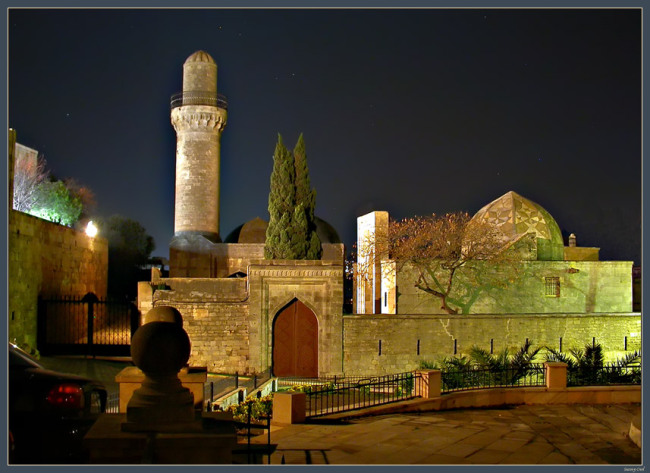Azerbaijan is a country of rich cultural and historic heritage. In ancient times, it was an important stop on the Great Silk Road.
According to ancient authors, the most active routes of the Great Silk Road passed through territory of Caucasian Albania, an ancient land located in the territory of preset-day Azerbaijan.
Azerbaijan has all the natural and geographic potential of a tourist destination. The shores of the Caspian, the Mugan, Karabakh, the Mil plains, the mountains, forests, rivers, springs, lakes, summer recreation areas and historical monuments are headline tourist attractions.
Occupying comparatively small territory (86,600 square kilometers), Azerbaijan enjoys nine of the world’s 11 climate zones (from subtropics to Alpine meadows), adding to the range of destinations on offer. The Talish Mountains and the Greater and the Smaller Caucasus Mountains make up more than half of the entire territory.
 |
| Shirvanshakh Palace |
The relics of the Neanderthal man found in Azykh Cave testify that 250,000 years ago during the Early Paleolithic Era, the primitive people lived in the territory of Azerbaijan. The rock carvings of Gobustan (60 kilometers from capital Baku), dating from the Mesolithic period (seventh and eighth centuries B.C.), feature more than 4,000 drawings of people, wild and domestic animals, and scenes of hunt and dance, among others. They have unique historical and architectural significance not only for Azerbaijan, but for the world culture on the whole.
The architectural monuments of Azerbaijan of the seventh and eighth centuries are included in the Golden Fund of the World Architectural Heritage. This is Baku Fortress’ “Icheri Sheher” (seventh century) where, on a small territory of 22 hectares surrounded by walls, are 44 unique monuments of the Middle Ages.
Among them are the Complex of the Palace of Shirvanshakhs (15th century), the minaret Synyk Gala (11th century), the Maiden Tower (12th century) and the minaret Juma mosque (15th century). Being built in different centuries, they have mirrored the distinctive features of their epoch, and even now everybody is amazed by their magnificence and the completeness of their shapes.
A unique sample of Azerbaijani architecture ― a symbol of the city ― “Maiden” Tower (12th century) is particularly distinguished. The Palace of Shekikhans attracts great interest of tourists. This is a rare and original 18th-century monument of located in Sheki-city, one of Azerbaijan’s ancient cities. Double-circled walls of the palace are covered by multicolored paintings and frescos, and the ceiling design repeats the patterns of the huge carpet that used to cover the floor.
The historical and architectural monuments of Azerbaijan described above are only the lesser part of what you can observe on tourists’ routes of Baku, Shamaha, Sheki, Ganja, Guba, Lankaran and other cities.
Azerbaijan is a region with unique geographical, climatic and geopolitical characteristics. There are six national parks, 17 natural and historical reserves, 20 sanctuaries and seven rest zones along the Caspian Sea. Azerbaijan has the most reserves per kilometer of any country in the world.
In Azerbaijan one can meet plenty of curative, mineral and thermal waters, mud and oil for medical treatment. They are spread throughout the Guba, Shamakhi-Ismayilli, Balakan-Gabala, Sheki-Zagatala, Nakhchivan and Ganjabasar regions.
Azerbaijan is rich in minerals and mud is widely used for health tourism. Astonishingly, around 300 of the world’s estimated 700 mud volcanoes lie in Azerbaijan and the Caspian Sea.

